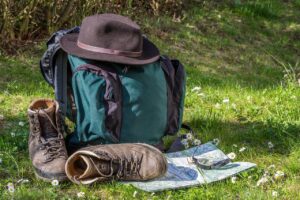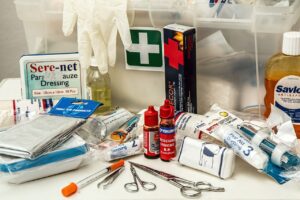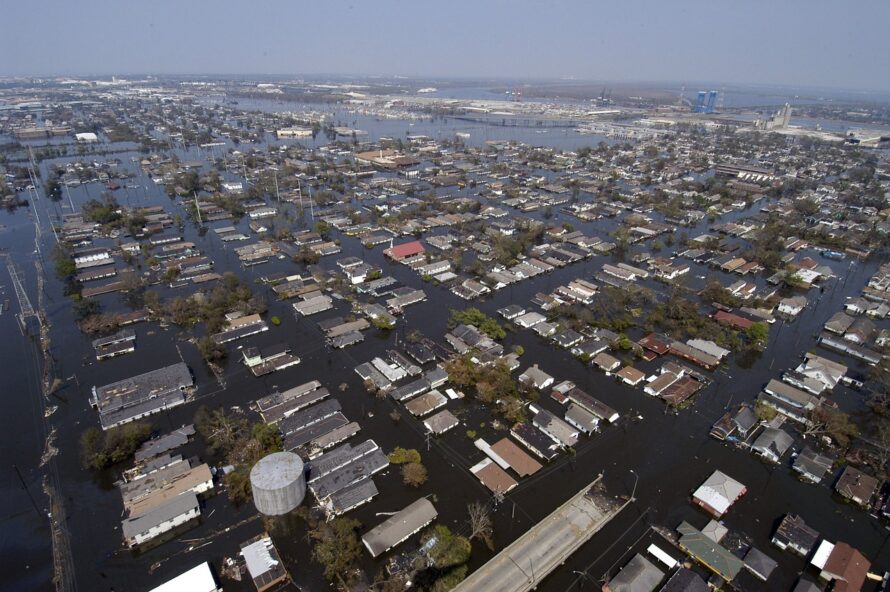Surviving An Extreme Weather Disaster
There has been an upsurge in extreme weather disasters in recent years around the globe. From hurricanes and floods to wildfires and earthquakes, these natural events can be catastrophic and life-threatening.
 Surviving extreme weather requires preparation and resilience. It is important to take immediate action and evacuate to a safe location if instructed to do so. If evacuation is not possible, finding a secure location such as a basement or an interior room without windows is recommended. Be sure to have a communication plan with family and friends to ensure that everyone is safe and accounted for.
Surviving extreme weather requires preparation and resilience. It is important to take immediate action and evacuate to a safe location if instructed to do so. If evacuation is not possible, finding a secure location such as a basement or an interior room without windows is recommended. Be sure to have a communication plan with family and friends to ensure that everyone is safe and accounted for.
After the disaster, it is important to remain vigilant and avoid hazards such as downed power lines and contaminated water sources. Seeking medical assistance for injuries and trauma is also vital. You can contact your local emergency management agency to learn more about the specific risks in your region.
Remember that disasters can be unpredictable, but taking the necessary precautions and using these 5 tips can minimize the risks and save lives.
1. Dress Appropriately
In the event of a disaster, it is crucial to dress appropriately for both the type of disaster and the season. In the case of a flood or hurricane, wearing lightweight or waterproof clothing is essential.
During a wildfire, wearing protective clothing such as long sleeves and pants made of non-flammable materials is crucial to prevent burns. In colder months, wearing layers of warm clothing is essential to prevent hypothermia, especially if you expect to spend a long time outdoors.
Wearing comfortable and practical clothing is crucial to ensure you can move quickly and safely.
Another very important item to consider is your footwear. In the case of flooding, wearing waterproof boots or shoes with a good grip can prevent you from slipping and falling. During winter, wearing insulated and waterproof boots can protect your feet from the cold and potential frostbite.
2. Pack the Right Gear in Your Bug-out Bag
When it comes to disaster preparedness, having a bug-out bag is a crucial element to ensure you and your loved ones are ready to evacuate should the need arise. The key to making the most out of your bug-out bag is to pack the right gear.
 Your bug-out bag should contain basic survival items such as water, food, and shelter. Pack enough water to last for at least 72 hours, along with non-perishable food items such as energy bars and canned goods. Additionally, include a sturdy tent, sleeping bag, and appropriate clothing to protect you from harsh weather conditions.
Your bug-out bag should contain basic survival items such as water, food, and shelter. Pack enough water to last for at least 72 hours, along with non-perishable food items such as energy bars and canned goods. Additionally, include a sturdy tent, sleeping bag, and appropriate clothing to protect you from harsh weather conditions.
Next, make sure to pack a first aid kit with essential medical supplies such as bandages, antiseptic, and pain relievers. In addition, pack tools such as a multi-tool, a fire starter kit, and a map and compass to aid navigation.
Another aspect to consider when packing your bug-out bag is personal hygiene. Pack toiletries such as soap, toothpaste, and toilet paper as well as a foldable toilet.
3. Stay Hydrated and Well-Fed
During a disaster, it is essential to stay hydrated and well-fed in order to maintain your energy and strength. Make sure you have a plan in place so you have access to clean drinking water, as well as non-perishable foods that are easy to prepare and store.
In addition to having a supply of bottled water and canned or dried foods on hand, consider investing in a water filtration system or portable water purification tablets for emergency situations.
It is also important to remember the importance of electrolytes during times of stress, as they play a critical role in maintaining proper bodily functions. Consider keeping a supply of electrolyte-rich drinks, such as sports drinks, on hand to help replenish your body’s stores in the event of an emergency.
4. Prepare for Emergencies
One of the most important steps you can take to prepare for an emergency is to create an emergency plan. Your plan should include the following:
- a list of emergency contacts
- a designated meeting place
- an evacuation route
 It is also essential to have a well-stocked first aid kit and enough medication and personal hygiene items for each member of your family.
It is also essential to have a well-stocked first aid kit and enough medication and personal hygiene items for each member of your family.
Stay tuned to local news and listen to emergency alerts. It is also important to know the types of disasters that can occur in your area and how to respond to them.
Know the location of the nearest shelter or emergency services and have your first aid kit with you.
Carry a fully charged cell phone and a satellite phone or Personal Locator Beacon (PLB) for communication. And make sure to tell someone your bug-out plans.
5. Know Your Tolerance for Extreme Weather Conditions
Extreme weather conditions can be physically and mentally challenging. Know your physical limits and adjust your plans accordingly. Take frequent breaks to rest and warm up or cool down. If you feel too cold, hot, or tired, stop and set up camp for the night. Always listen to your body and trust your instincts.
Surviving extreme weather conditions requires preparation, gear, and common sense. Following these tips and tricks can help you stay comfortable, dry, and safe in the most challenging environments.
Take some time to plan and prepare before the next disaster strikes.
Read More: 10 Survival Skills to Learn to Keep You Alive When You Bug Out


